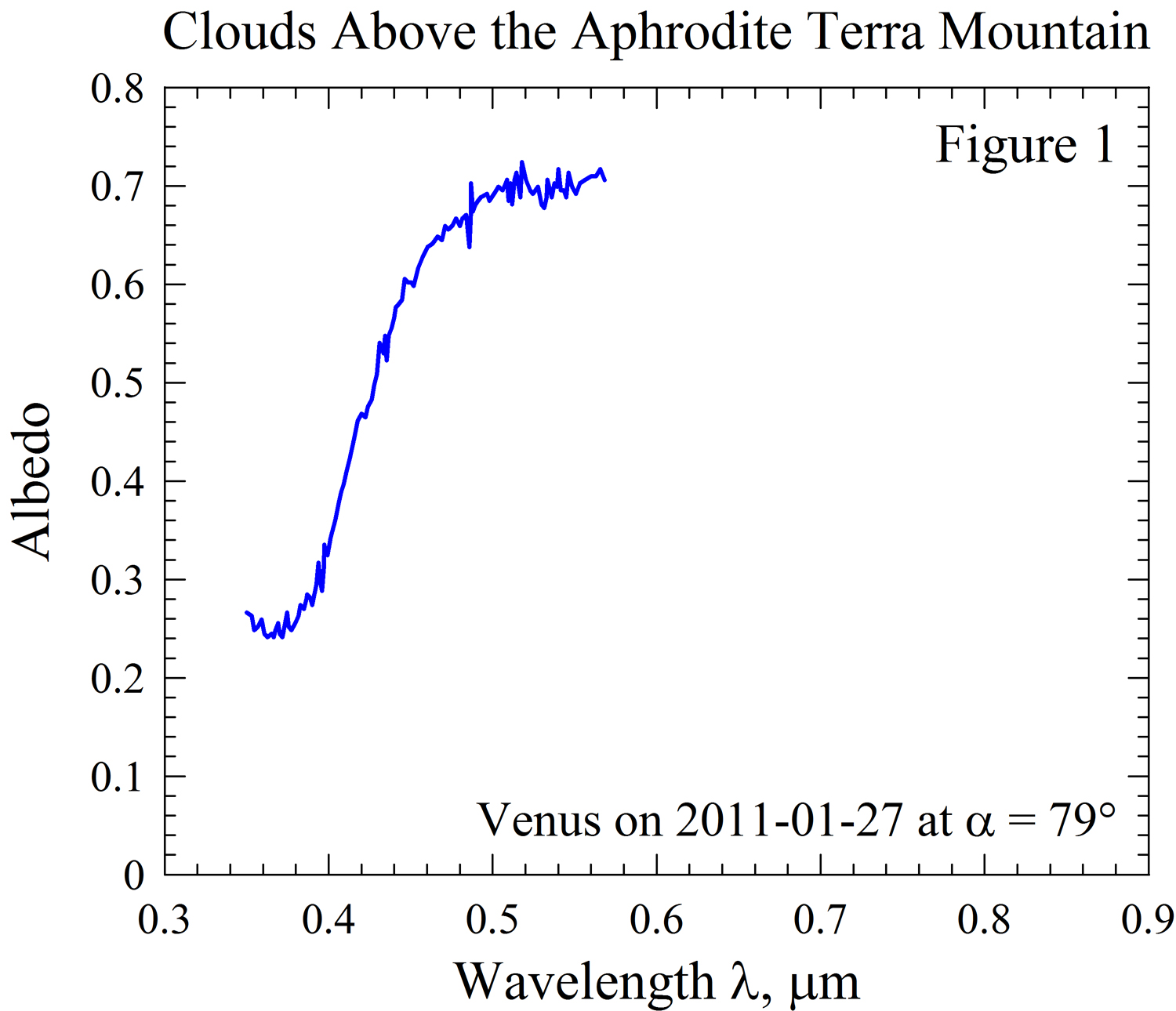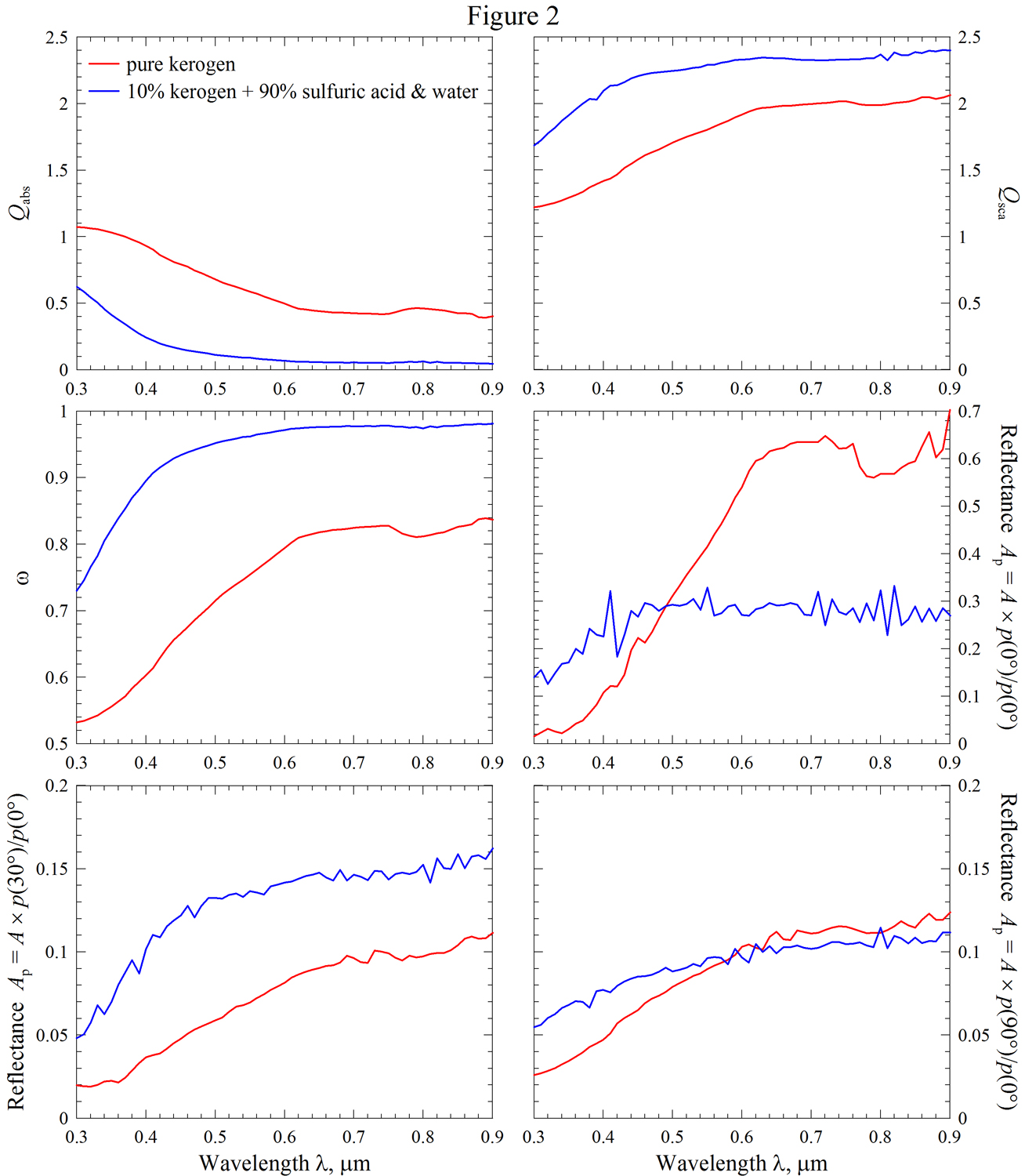On interplanetary origin of the unknown UV absorber in the atmosphere of Venus
- 1Institute for Basic Science (IBS), Planetary Atmospheres Group, Korea, Republic of (evgenij.s.zubko@gmail.com)
- 2Institute for Basic Science (IBS), Planetary Atmospheres Group, Korea, Republic of (yeonjoolee@ibs.re.kr)
Venus is the twin sister of our planet Earth, whose atmosphere underwent a dramatically different evolution. The atmosphere of Venus is hot and dense near the surface, which entirely covered by the clouds. The upper cloud layer spans altitudes up to ~70 km. On top of this layer, there also seats a layer of haze, whose upper boundary is as high as 90 km. This haze layer and top of the upper cloud layer are what can be observed in the visible from space; whereas, other layers of the atmosphere and underlying terrains remain permanently hidden from an external observer using reflected solar radiance. These clouds of Venus appear to be rich in enigmas. One of them is the unknown UV absorber. This term is often used in the literature to designate an unknown substance that yields a very steep gradient in the spectrum detected in the atmosphere of Venus (e.g., Pollack et al. 1980; Lee et al. 2015; Jessup et al. 2020). Figure 1 shows an example of such spectrum as it is reported by Jessup et al. (2020). As one can see here, there is a noticeable gap in the albedo spectrum centered at wavelength λ = 0.36 μm and a factor of ~3 increase of reflectivity over quite narrow range of wavelength λ = 0.36 – 0.55 μm. In the literature, several plausible candidates were put forth to explain the observed spectral gradient. It also is worth noting that there is no consensus about this matter yet. A relatively broad absorption band cannot be explained by the existing atmospheric gaseous compositions. As such, all the candidates for a role of the UV absorber(s) considered in the literature to date are assumed to have local, Venus origin. However, it necessarily implies an existence of mechanism for systematic transport of a considerable amount of aerosol particles to extremely high altitudes, 70+ km. In this work, we report preliminary results of the ongoing research on an interplanetary origin of the unknown UV absorbers.

Interplanetary space in our Solar System is filled with dust. The cloud of interplanetary dust particles (IDPs) can be observed from Earth (Zodiacal Light) in places having low light pollution. IDPs continually strike the Earth atmosphere, loading a considerable amount of dust, up to 60,000 metric tons per year (Love & Brownlee 1993). It is significant that the cumulative mass input of IDPs may exceed that of large meteoroids (> 1 cm) and asteroids (< 10 km) over our historically recorded time period. However, unlike meteoroids and asteroids immediately falling onto a planet surface, IDPs settle in the upper atmosphere for a while, altering its chemical composition. It is important that due to closer heliocentric distance Venus is expected to gather about twice higher load of interplanetary dust as compared to Earth, i.e., 120,000 metric tons per year. As reasoned by Nesvorný et al. (2010), IDPs have mainly cometary origin and, hence, they may consist of primordial material(s). Interestingly, polarimetric observations of exploding and split comets reveal predominantly carbonaceous-dust composition of their nuclei (e.g., Zubko et al. 2011; 2020). A common feature of these species of comets is that their material absorption in the visible is greater at shorter wavelengths. Therefore, these species could appear consistent with the strong spectral gradient observed spectrum of Venus, and attributed to the unknown UV absorber. Here, we investigate material kerogen, whose optical constants were reported by Khare et al. (1990). Note, wavelength dependence of the imaginary part of refractive index Im(m) in kerogen closely matches what was measured in the Murchison meteorite Khare et al. (1990). As such, a similar wavelength dependence of Im(m) was inferred in comets (e.g., Zubko et al. 2011).
Using our own code implementing the Mie theory (e.g., Bohren & Huffman 1983), we study scattering and absorption of light by spherical particles having two types of chemical composition: (1) pure kerogen and (2) uniform mixture of 10% kerogen (by volume) and 90% typical composition of the aerosol particles in atmosphere of Venus (i.e., mixture of 75% sulfuric acid and 25% water).
Refractive index of pure kerogen is adapted from Khare et al. (1990); whereas, refractive index of typical Venusian aerosol is taken from Palmer & Williams (1975). Refractive index of their mixture is obtained using the Bruggeman effective-medium theory (e.g., Bohren & Huffman 1983). Particles of both types obey the same power-law size distribution r–n at n = 2. Radius of particles spans the range from r = 0.05 μm up to 2 μm with increment Δr = 0.05 μm. Such size distribution closely matches the in situ finding in the upper cloud layer of Venus (Knollenberg and Hunten 1980). Figure 2 shows spectra of efficiency of absorption Qabs and scattering Qsca, the single-scattering albedo ω, the albedo Ap at phase angles 0°, 30°, and 90°. Note, Ap is defiend as a product of the geometric albedo A and the phase function normalized at 0°. As one can see in Figure 2, both types of particles reveal qualitatively similar wavelength dependence of their albedo at all phase angles. They do suggest an absorption band near UV that gets quickly dampened at larger wavelength, resembling what emerges from the unknown UV absorber in Figure 1. Searching for quantitative fit to observations is a subject for our further research.

References
Bohren C. F., Huffman D. R., 1983, Absorption and Scattering of Light by Small Particles. Wiley, New York, USA
Jessup K.-L., et al. 2020, Icarus, 335, 113372
Khare et al. 1990, LPSC, 21, 627
Knollenberg R.G., Hunten D.M. 1980, J. Geophys. Res., 85, 8039
Lee Y.J., et al. 2015, Icarus, 253, 1
Love S.G., Brownlee D.E. 1993, Science, 262, 550
Nesvorný D., et al. 2010, Astrophys. J., 713, 816
Palmer K.F., Williams D. 1975, Appl. Opt., 14, 208
Pollack J.B., et al. 1980, J. Geophys. Res., 85, 8141
Zubko et al. 2011, J. Quant. Spectrosc. Radiat. Transfer, 112, 1848
Zubko et al. 2020, Mon. Not. Roy. Astron. Soc., 497, 1536
How to cite: Zubko, E. and Lee, Y. J.: On interplanetary origin of the unknown UV absorber in the atmosphere of Venus, Europlanet Science Congress 2024, Berlin, Germany, 8–13 Sep 2024, EPSC2024-284, https://doi.org/10.5194/epsc2024-284, 2024.